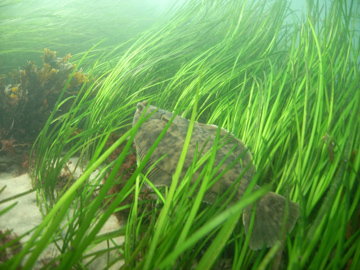Seagrass meadows are some of the most important patches of the ocean floor. They provide habitat for fish, shellfish, and birds. They protect the coast from storms. And recent research found evidence of what may be the most important service of all. They take a lot of carbon out of the atmosphere and store it in the mud below them.

Seagrasses are found in shallow coastal waters around the world, but they’re disappearing in a hurry. Since the start of the 21st century, the area covered by seagrass beds has dropped by an average of one-and-a-half percent per year. The loss is largely the result of human activity, such as dredging and pollution
A recent study says that could be bad news for the environment. Researchers studied records of almost a thousand seagrass beds across the globe. They found that there was a huge amount of carbon tied up in the grasses, their roots, and especially in the sediments. In fact, a seagrass meadow stores more than twice as much carbon as a similar-sized plot of trees on land. And it can keep the carbon trapped for centuries.
Carbon dioxide in the atmosphere traps heat from the Sun, causing our planet to get warmer. But the oceans take a lot of the carbon dioxide out of the air. They store the carbon in sediments and in living organisms, such as the seagrasses. When seagrass beds are destroyed, much of their stored carbon goes back into the air. So the loss of these underwater plants isn’t just bad for the seagrass

